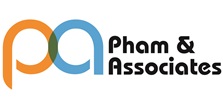UNITED STATES: Deceptive Tea Trademark Not Registrable for Acquired Distinctiveness
On March 5, 2013, the Trademark Trial and Appeal Board (TTAB) found that the mark WHITE JASMINE & Design, as used with “beverages made of tea; black tea; flavouri
On March 5, 2013, the Trademark Trial and Appeal Board (TTAB) found that the mark WHITE JASMINE & Design, as used with “beverages made of tea; black tea; flavourings of tea; spice blends; spices” in Class 30, was deceptive and therefore unregistrable under Section 2(a) of the Trademark Act. In re White Jasmine LLC, Serial No. 77115548, 106 U.S.P.Q.2d 1385 (T.T.A.B. 2013) (precedential). Although deceptiveness is an absolute bar to registration, in the “interest of completeness” the TTAB also found that the mark was also deceptively misdescriptive but had not acquired distinctiveness so as to be otherwise registrable under Sections 2(e) (1) and 2(f).
White Jasmine LLC applied to register the mark WHITE JASMINE & Design in 2007. The application had a long and difficult prosecution history that included several office actions. In the fifth office action, issued in 2010, the examining attorney withdrew the Section 2(a) deceptiveness refusal with respect to WHITE JASMINE but continued it with respect to WHITE. The examiner explained that WHITE implied the applicant’s goods included “white tea” when in fact the applicant had indicated that its goods did not include such tea.
The Three Factors of Deceit
Considering the continued refusal on appeal, the TTAB applied the three-factor test for deceptiveness set forth in In re Budge Manufacturing Co., 857 F.2d 773 (Fed. Cir. 1988), aff’g 8 U.S.P.Q.2d 1790 (T.T.A.B. 1987): “(1) Is the [allegedly] deceptive term misdescriptive of the character, quality, function, composition or use of the goods? (2) If so, are prospective purchasers likely to believe that the misdescription actually describes the goods? (3) If so, is the misdescription likely to affect a significant portion of the relevant consumers’ decision to purchase?”
The TTAB held that because white jasmine tea is a subcategory of two types of tea (white tea and jasmine tea), “the word ‘White’ immediately describes, without conjecture or speculation, a significant ingredient of tea” and was therefore misdescriptive of the applicant’s goods. It also held that prospective purchasers would believe, falsely, that the applicant’s goods included white tea. Finally, the TTAB held that because some consumers believe that white tea has “desirable health benefits,” the misdescription would be material to such consumers and likely to induce them to buy the applicant’s goods. Because the mark WHITE JASMINE & Design reflected all three factors in the Budge test, the TTAB affirmed that it was deceptive and therefore unregistrable.
Turning to the issue of whether the mark was deceptively misdescriptive, the TTAB applied the two-part test laid out In re Quady Winery Inc., 221 U.S.P.Q. 1213, 1214 (T.T.A.B. 1984): “(1) whether the matter sought to registered misdescribes the goods and, if so, (2) whether anyone is likely to believe the misrepresentation.” The Board held that because WHITE was deceptive with respect to the applicant’s goods, WHITE was also misdescriptive of those goods, and that consumers would be likely to believe that the goods were white jasmine tea when they were not. Accordingly, the TTAB found that the mark WHITE JASMINE & Design was deceptively misdescriptive, requiring a disclaimer of the word portion of the mark unless the word portion had acquired distinctiveness.
Deceptive, Not Distinctive
The final issue was whether, absent the refusal under Section 2(a), the mark was registrable as deceptively misdescriptive under Section 2(e)(1) but with acquired distinctiveness under Section 2(f). The TTAB held that the applicant’s evidence—for example, approximately 10,000 units sold and $75,000 in revenue generated over a period of four years—was insufficient to show that WHITE JASMINE & Design had become distinctive with respect to the applicant’s goods. Accordingly, the TTAB affirmed the requirement for a disclaimer.
(Source: www.inta.org)


